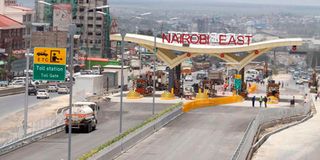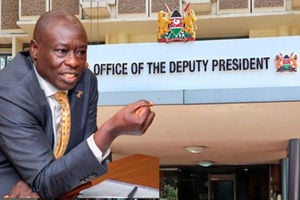Expressway to revolutionise city transport

One of the Nairobi Expressway toll stations.
Cities have a crucial role to play in the attainment of Sustainable Development Goals. Over 50 per cent of the global population lives in cities, which are also responsible for around 70 per cent of global energy-related emissions. Consequently, cities are on the frontline of both climate impacts and the transition to a sustainable future for all.
As cities grow, the demand for urban transport also increases. But how these cities respond to the growing demand will determine the impact on the environment.
There is no doubt that a reliable and efficient public transport network is key to a healthy environment. Taking cognisance of this, President Uhuru Kenyatta embarked on building more highways and urban roads, as well as expanding rural roads to boost trade.
Dual carriageway
One of the President’s key legacy projects is the recently completed Nairobi Expressway, a four-lane and six-lane dual carriageway within the existing median of Mombasa Road, Uhuru Highway and Waiyaki Way. The expressway runs over 27km, linking Mlolongo town in Machakos County and Jomo Kenyatta International Airport to the Nairobi-Nakuru highway. The expressway is part of the northern corridor, which provides passage to 85 per cent of the cargo destined for Uganda, Rwanda, the DRC and South Sudan.
Apart from contributing to reduction in carbon emissions, the expressway will ensure residents enjoy efficient transit through the city. The expressway will help decongest traffic on A8 and meet the demands of JKIA expansion. It is expected to cut down transport time by 60 per cent across the city. For instance, it takes 15 minutes to travel from Westlands to Mlolongo, a distance that would ordinarily take longer time to cover, given the congestion on Uhuru Highway and Mombasa Road.
The Nairobi Expressway will be operated by Moja Express for 27 years. President Kenyatta recently announced that the expressway will be open to motorised public on Saturday, May 14, on a trial basis. The expressway has 11 interchanges and is expected to accommodate 120,000 daily active users.
Expressway
More than 10,000 people have already registered to use the expressway, whose design speed is 80kph. Toll charges are computed based on the vehicle type, entry and exit station. For instance, saloon cars joining the expressway at Westlands and exiting at Mlolongo will pay Sh360.
There are three payment methods, namely cash, Electronic Toll Collection (ETC) and Manual Toll Collection (MTC). Cash users need not register prior to their trip on the Nairobi Expressway. An ETC card requires installation of a unit known as On-Board Unit (OBU) in the vehicle for automatic toll payment. It allows you to easily transition the stations without stopping.
Though mobile money is currently not among the payment options, the expressway will in future adopt other payment methods such as M-Pesa. There are 27 toll plazas manned on a 24-hour basis. Ambulances, police vehicles, military personnel and fire trucks are exempted from payment.
Tuk tuks, wheelbarrows, handcarts, bicycles, scooters and motorcycles and pedestrians are, however, not allowed on the expressway. There is no doubt that the expressway will revolutionise city transport.
Mr Ochieng is a communications and PR expert based in Nairobi.





